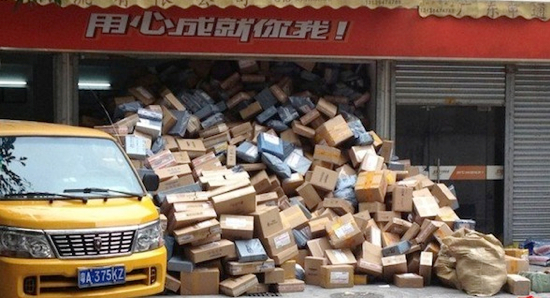 I’ve been spending a lot of time in grocery stores recently. Over the last six months I’ve visited supermarkets and hypermarkets in two continents and in seven different countries. You’d think that in such a diverse world, with so many cultural differences, that our grocery stores would reflect our diversity and differences, wouldn’t you?
I’ve been spending a lot of time in grocery stores recently. Over the last six months I’ve visited supermarkets and hypermarkets in two continents and in seven different countries. You’d think that in such a diverse world, with so many cultural differences, that our grocery stores would reflect our diversity and differences, wouldn’t you?
And yet when I compare grocery stores in Spain and Singapore, Udine and Udon Thani, Dublin and Driotwich I’m often faced with exactly the same picture: aisle after aisle of uniformly presented shelves full of evenly stacked and ubiquitous products. The similarity between the places we shop in is striking and at the same time it’s stultifying!
Do grocery stores have to be so dull?
On a recent trip to Ireland, I got to spend some time with Ken Hughes from Glacier Consulting, and it was that meeting that got me thinking about this. Ken is a behavioral economist, which means he’s interested in how our behaviors influence the economic choices we make. He applies this expertise when looking at the way we shop. He has watched shoppers, measured their brain waves, even tracked the speed at which trolleys are pushed through stores and all of his research leads to a singular conclusion – when we shop, we do so on auto-pilot.
Studies time and again bear this out; as grocery shoppers we pay little attention to our environment, only seeking out the products we actually want in a category most of the time. Ken likens this to using the grocery store as an extension to our pantries – we just reach into stores and grab what we want, without really thinking about it. So of course we find shopping dull – for many of us it’s dead time.
But does the in-store environment of grocery stores we shop in need to be dull?
Dull environments sustain habits
Ironically, a dull environment may be exactly what we need. A dull environment may not be sexy but it is extremely predictable. Predictability supports habits.
We actually buy a relatively limited range of grocery products every year and we tend to buy from portfolios of brands we trust – in effect many of us buy grocery products habitually. Many shoppers habitually go to the same store every week for their groceries and many of us will be familiar with the sensation when go shopping that we can’t really remember where we’ve been in the store and how our carts managed to get so full. The conclusion that shopping is habitual for many people is therefore unavoidable.
Retailers and manufacturers like this. For good reasons: it helps them plan; predictable habits support accurate forecasting which leads to effective inventory, logistics and production planning, all of which keeps costs down.
So dull, predictable environments are good for manufacturers and retailers, right? Well, no!
In order to grow, habits need to change
You don’t have to be a student of physics to have heard Einstein’s definition of insanity: “Doing the same thing over and over again and expecting different results.” This should be invoked often in the world of consumer goods marketing, because whilst the industry craves predictability, it needs growth to thrive. Unfortunately, the only way to grow is to encourage shoppers’ behavior to change, either by getting people who don’t buy to buy or buy getting those who do buy, to buy more, more often.
To do this, shopping environments need to be dynamic.
Creating a dynamic shopping environment
One of the coolest things about online retail environments is they have the potential to be in permanent flux. As my needs change and develop, Amazon’s offer (for instance) changes to reflect my changing behavior. Bricks and mortar stores are not so flexible, so creating a dynamic in-store environment of grocery stores is a much bigger ask. It requires a much higher level of collaboration between manufacturers and retailers to be successful. Together they need to:
- Identify the shopper behavior they want – do manufacturers and retailers want shoppers to trade-up, buy in greater volumes, join the category for the first time or (yes) stick to what they’ve always done?
- Ensure that the store can deliver – store operators (and their suppliers) need to be honest about what can be achieved in a grocery outlet. Will shoppers notice the new bigger idea? Are they prepared to take the extra time to learn about the category? Will they be upset if you mess with their habits?
- Define what needs to happen to change behavior – behaviors change as a result of stimuli – if you provide the right stimuli, behaviors will change. So together, retailers and manufacturers need to learn what stimuli really work.
- Make change a habit – shoppers will adapt to changes in retail environments quickly, so what was once an innovation rapidly becomes wall-paper and new habits get formed. To continue growing, marketers and merchants have to consistently innovate.
At engage we’ve made it our mission to help consumer goods companies to improve their engagement with consumers, shoppers and retail customers. If you are facing a growth challenge, contact us, to learn how we can help.

